As a new year at Fossil Rim gets underway each January, it also happens to be the primary time for examinations of the goats that live at the Children’s Animal Center.
“We did our annual physical exams on the goats from nose to tail,” said Veterinary Technician Allyssa Roberts. “The vet (Dr. Lauren Schmidt) listened to the heart and sounds in the stomach. We looked at their eyes, mouth, and collected blood samples to send out for testing and ensure that everything is normal. If anything is abnormal, we need to see if it is a gradual change or find out if something is wrong.

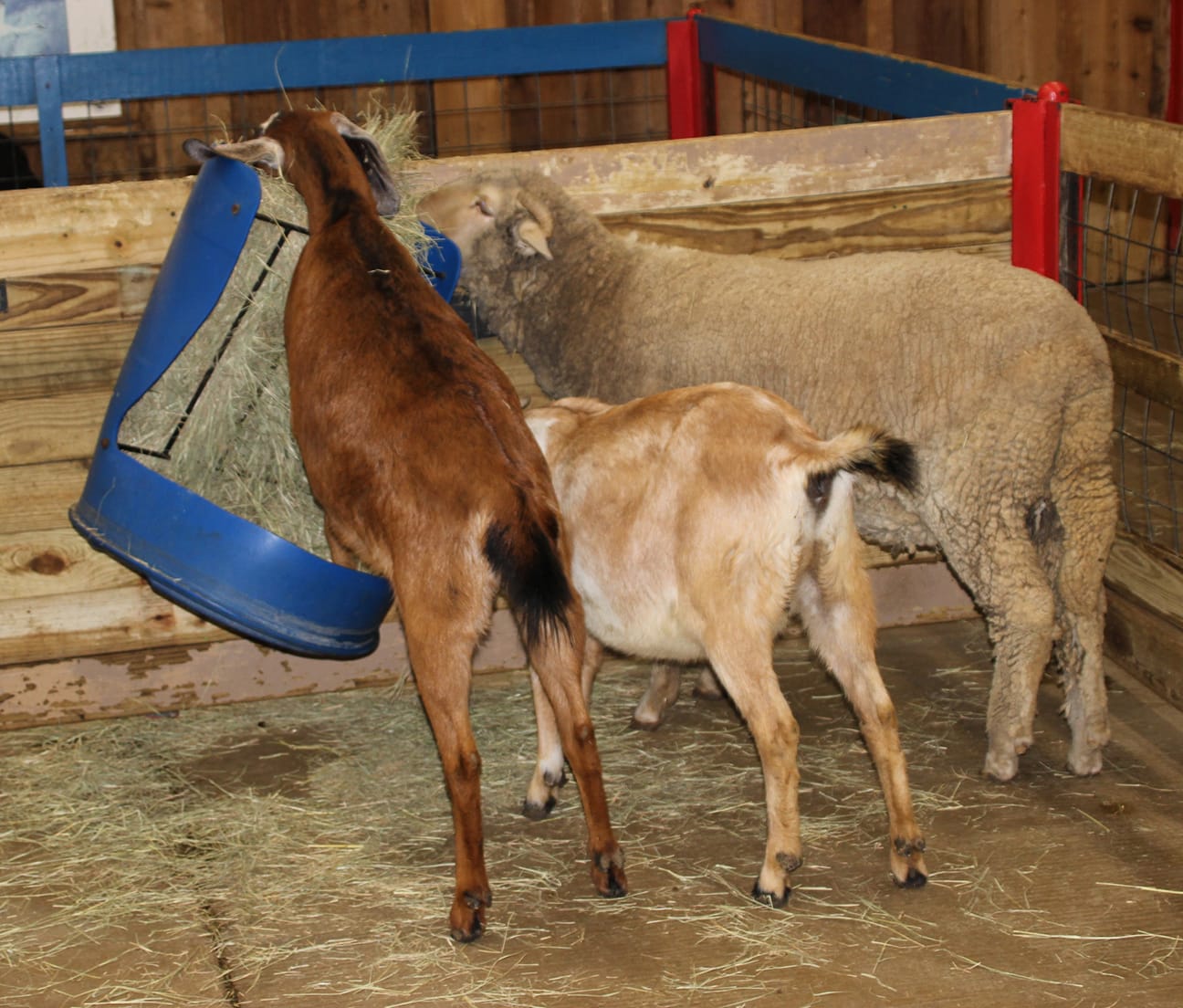
“We took temperature and heart rate. We give the goats vaccines for rabies, CDT (overeating disease and tetanus), and leptospirosis; vaccines are especially important considering the goats come into direct contact with some of our guests.
“We don’t typically X-ray the goats unless we think it is necessary, which could be the case for an older goat or one having breathing difficulties. Hoof trims are a routine procedure since the goats aren’t on typical terrain where they’d file down their hooves themselves.”
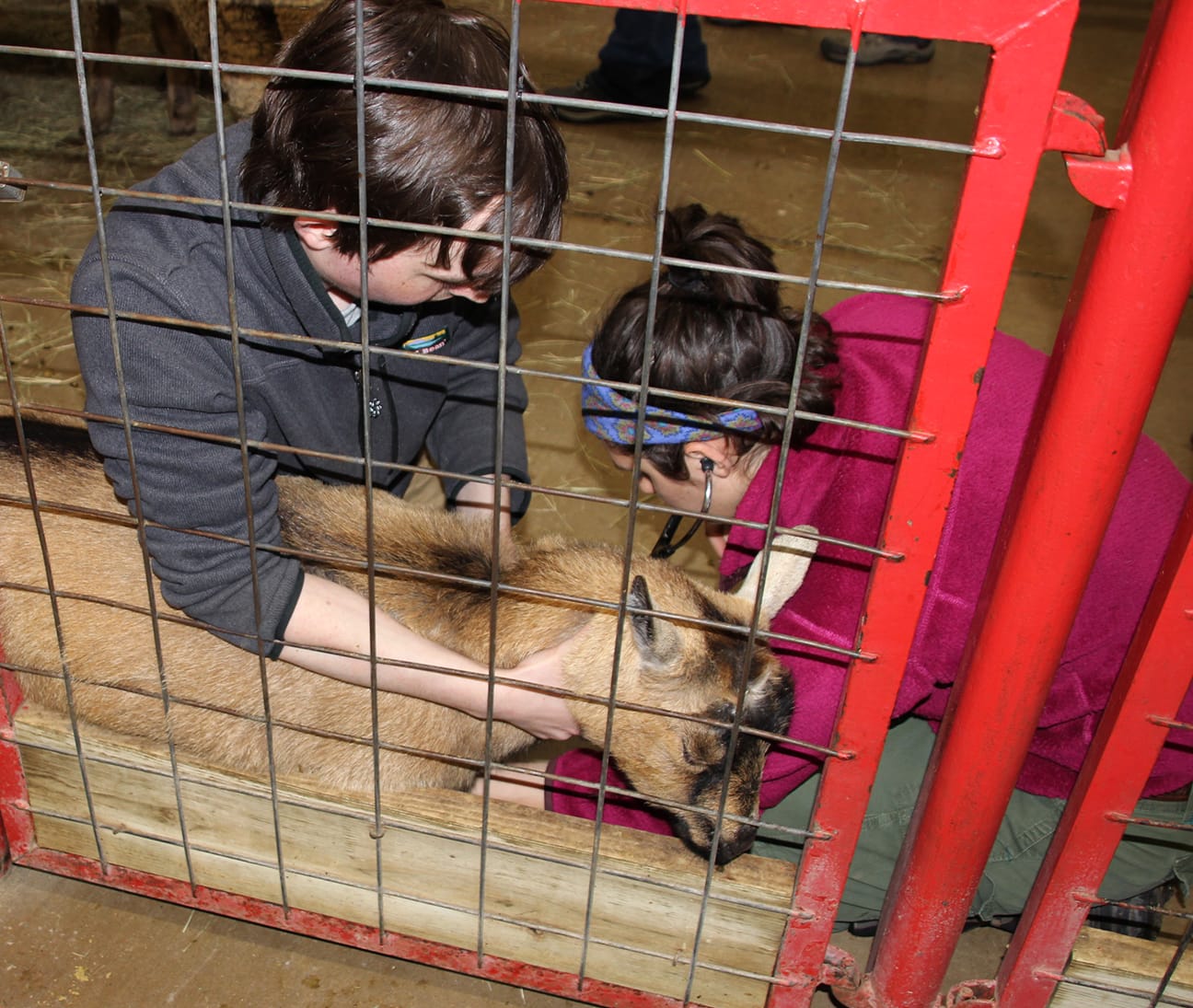

Not all Fossil Rim animals get annual exams, and certainly many of the animals are not awake during their exam.
“If we were doing exams on an animal like a sable, for example, it wouldn’t be a matter of an annual exam for every single one – there are too many of them,” Roberts said. “Instead, the animal care staff does visual exams from afar. If one of them looks abnormal, if they aren’t eating right, are limping, etc., then we’ll sedate the animal and bring it to the vet clinic. Our only hoofstock that are examined in a manner similar to the goats are our sheep and pot-bellied pigs.
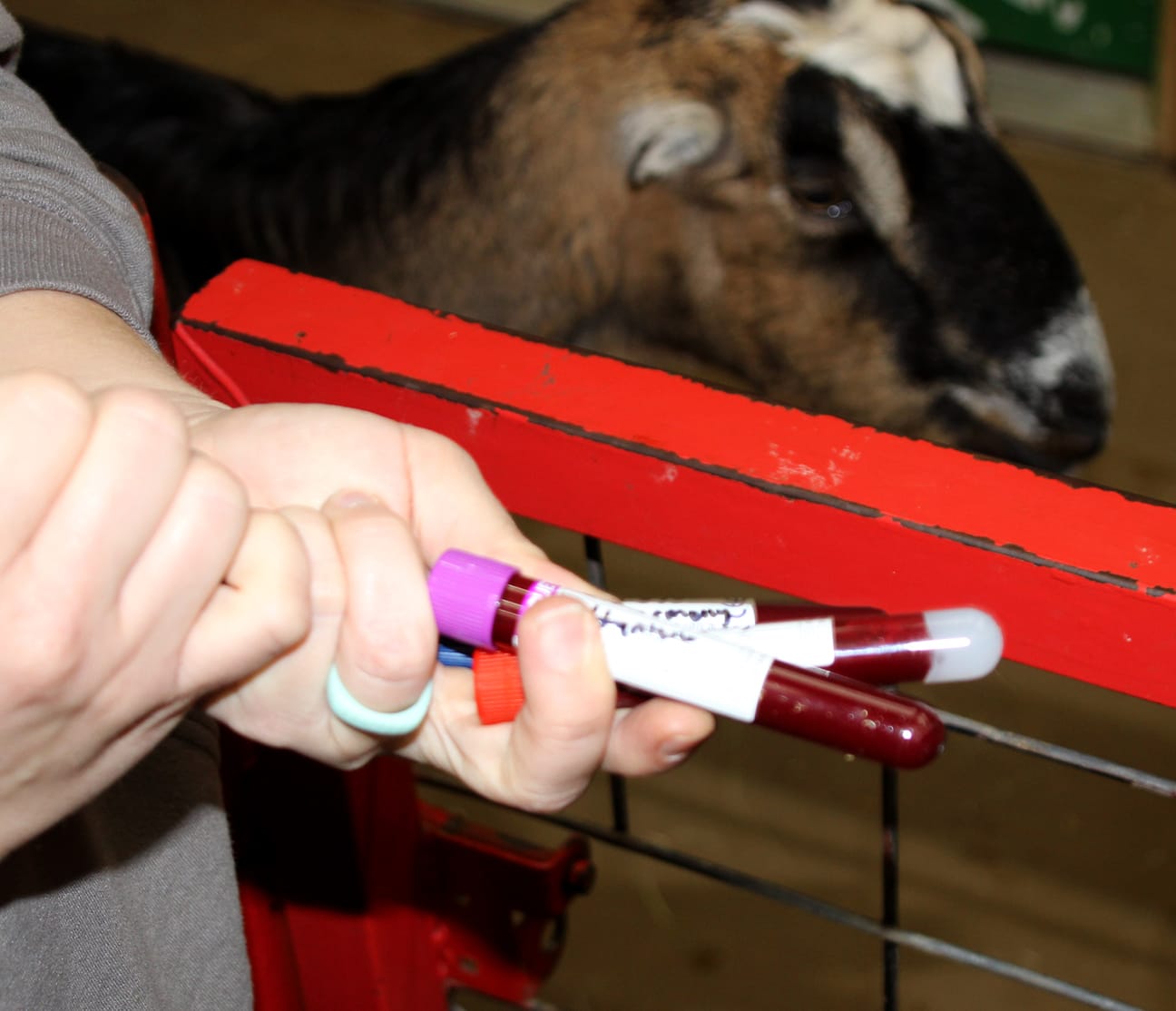

“The rhinos and giraffes get visual exams, and blood draws are done on rhinos while they are awake because they have been trained to cooperate. Since we can get goat exams done while they are awake, we do that because it’s easier on them; they are used to being handled by people. If a goat seemed especially scared, that one might be a candidate to get anesthetized.”
Roberts made sure the goats were properly restrained in order to conduct the exams.

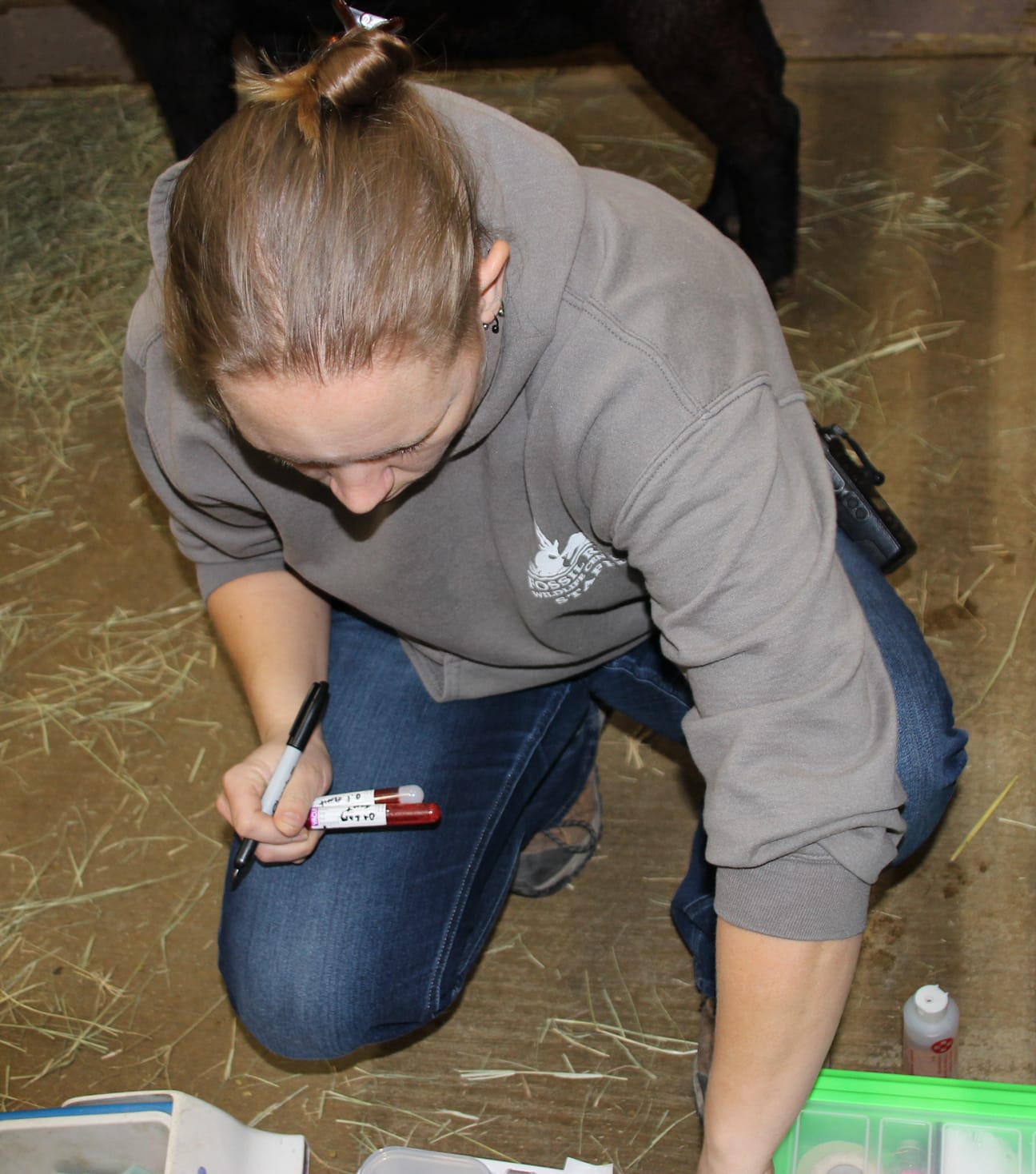
“Your method of restraint can depend on what the goat is used to,” she said. “Some show goats that are handled constantly are trained to stand there once they have a halter on. Most domestic horses are halter-trained.”
Although they may look like it, none of the goats at the Children’s Animal Center (CAC) are pregnant.
“You may look at a goat and think of a ‘hay belly’ that you might see on a horse,” she said. “It is due to the multiple chambers in their stomach for fermentation, which means food takes longer to process and their belly looks rounded with food that hasn’t processed through yet.”

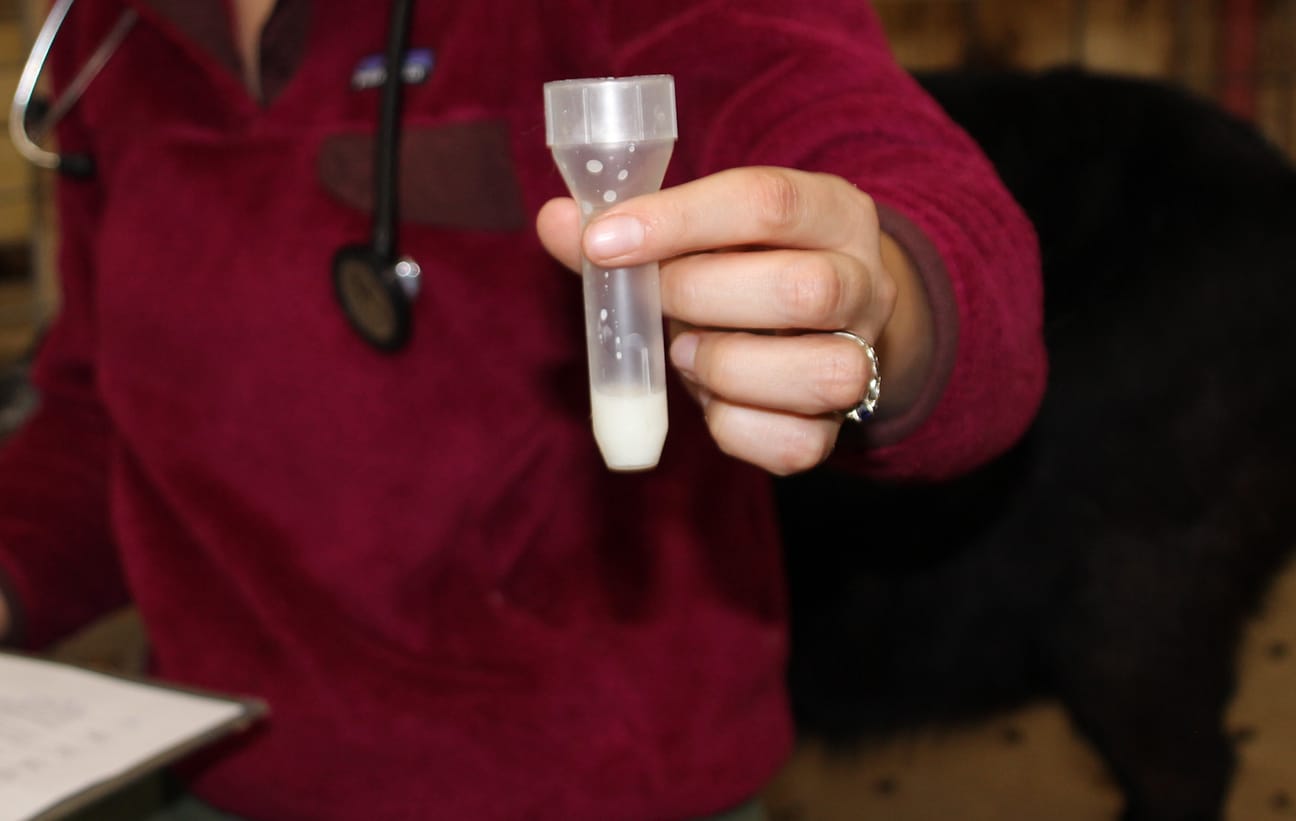
As the exams were being conducted, it was a learning opportunity for the vet tech intern, the veterinary preceptee, and the two CAC interns.
“We try to include interns in as much of the exam process as possible so they can maximize their learning,” Roberts said. “Both CAC interns were doing this for the first time, so I tried to teach them how to hold the goat and specifically how to restrain the head so blood could be drawn.”
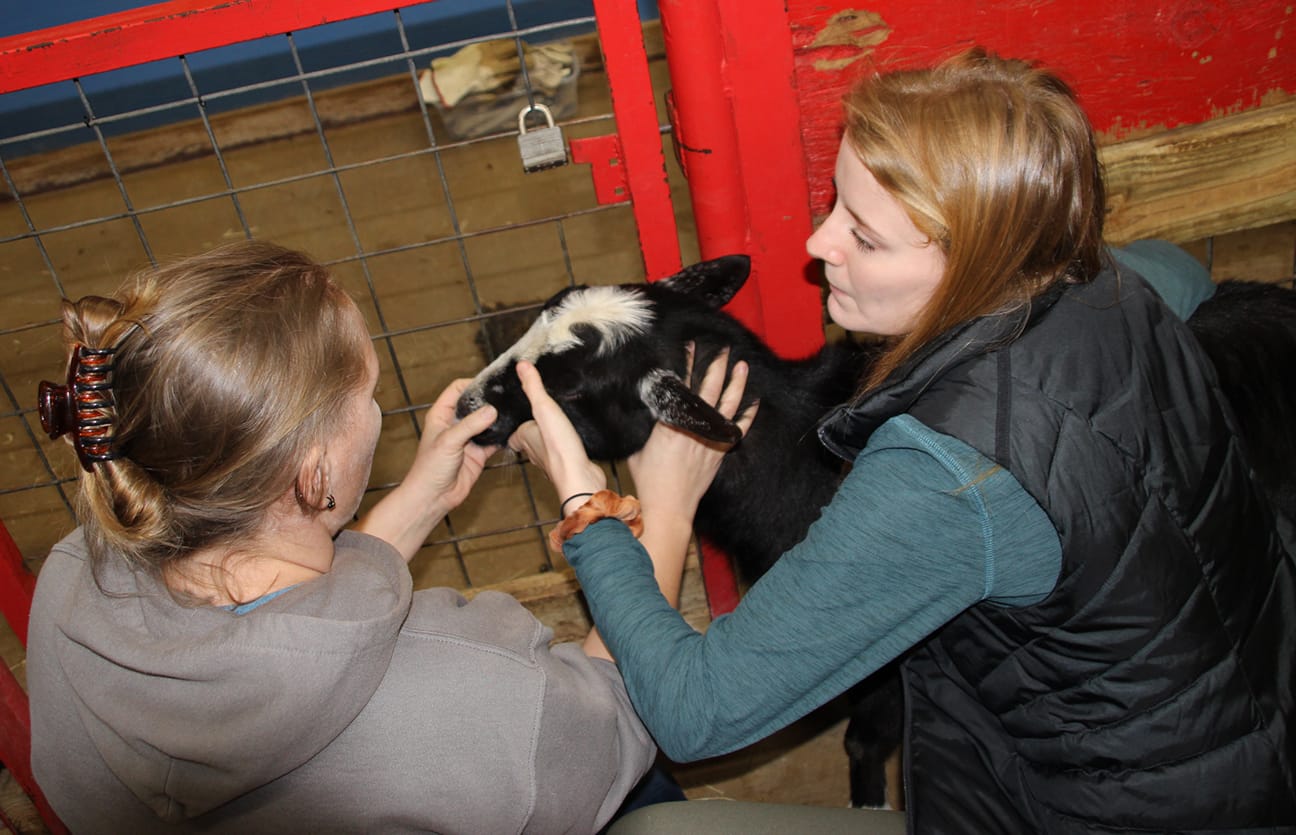
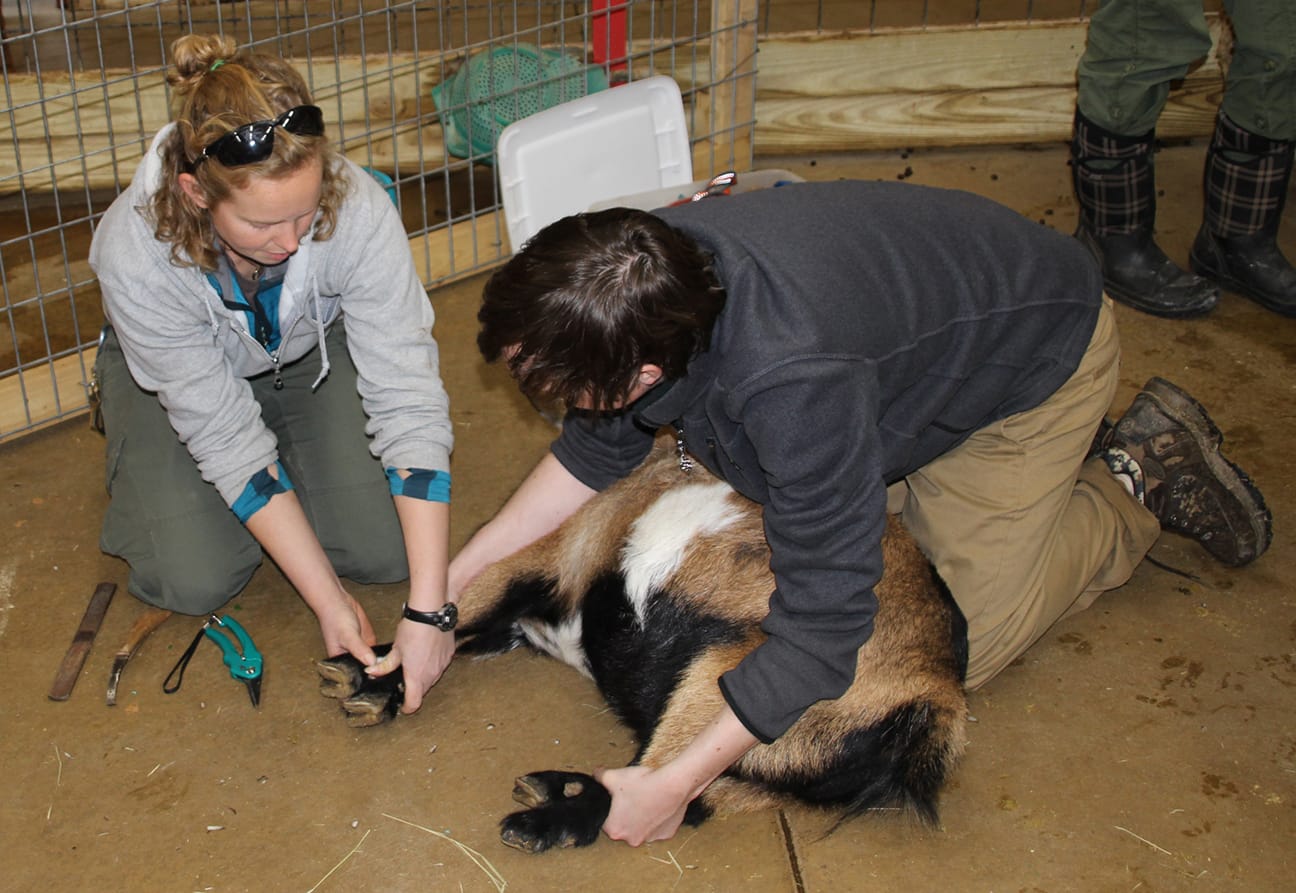
CAC Supervisor Kristina Borgstrom also appreciated the learning opportunity for her interns.
“The Children’s Animal Center is unique for interns in that it can be very hands-on with many of our animals,” she said. “The animals are trained to go into pens and are food-motivated. We like to get the interns involved with the exams of our animals so they learn different techniques, depending on the species. Some of that is learning how to properly restrain and handle an animal.
“This time, we got to test out our new halter on the goats and see how to restrain them against the fence for blood draws. Also, I taught the interns how to safely flip an animal – fold their legs underneath them, and then lay them down on the ground.
“So, being a CAC intern is not only about feeding the animals and cleaning up after them; they learned about the blood-draw process and how to do hoof trims, plus they got to work on exams of multiple goats to see how each one is different. This was a great learning experience for them.”
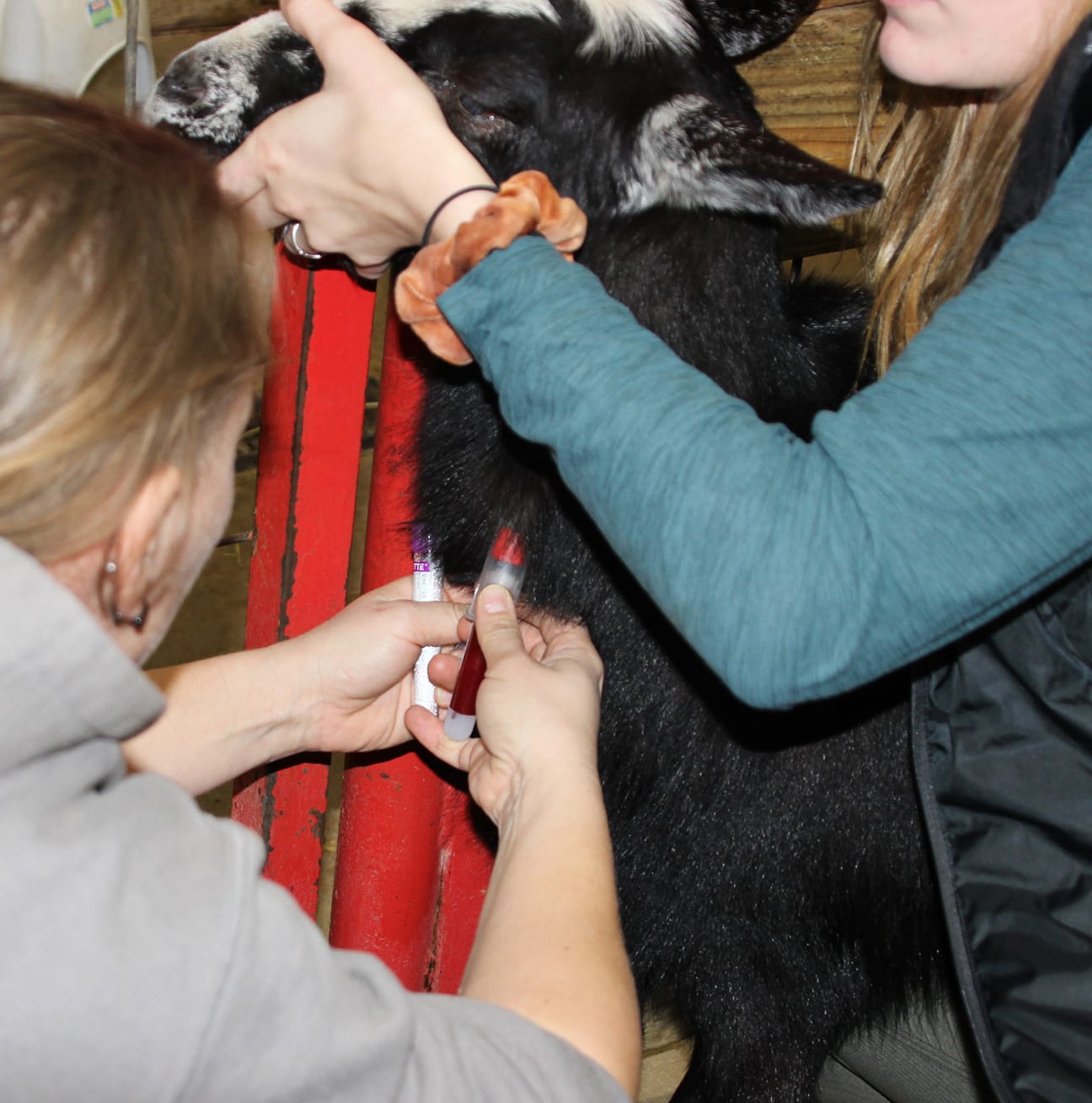
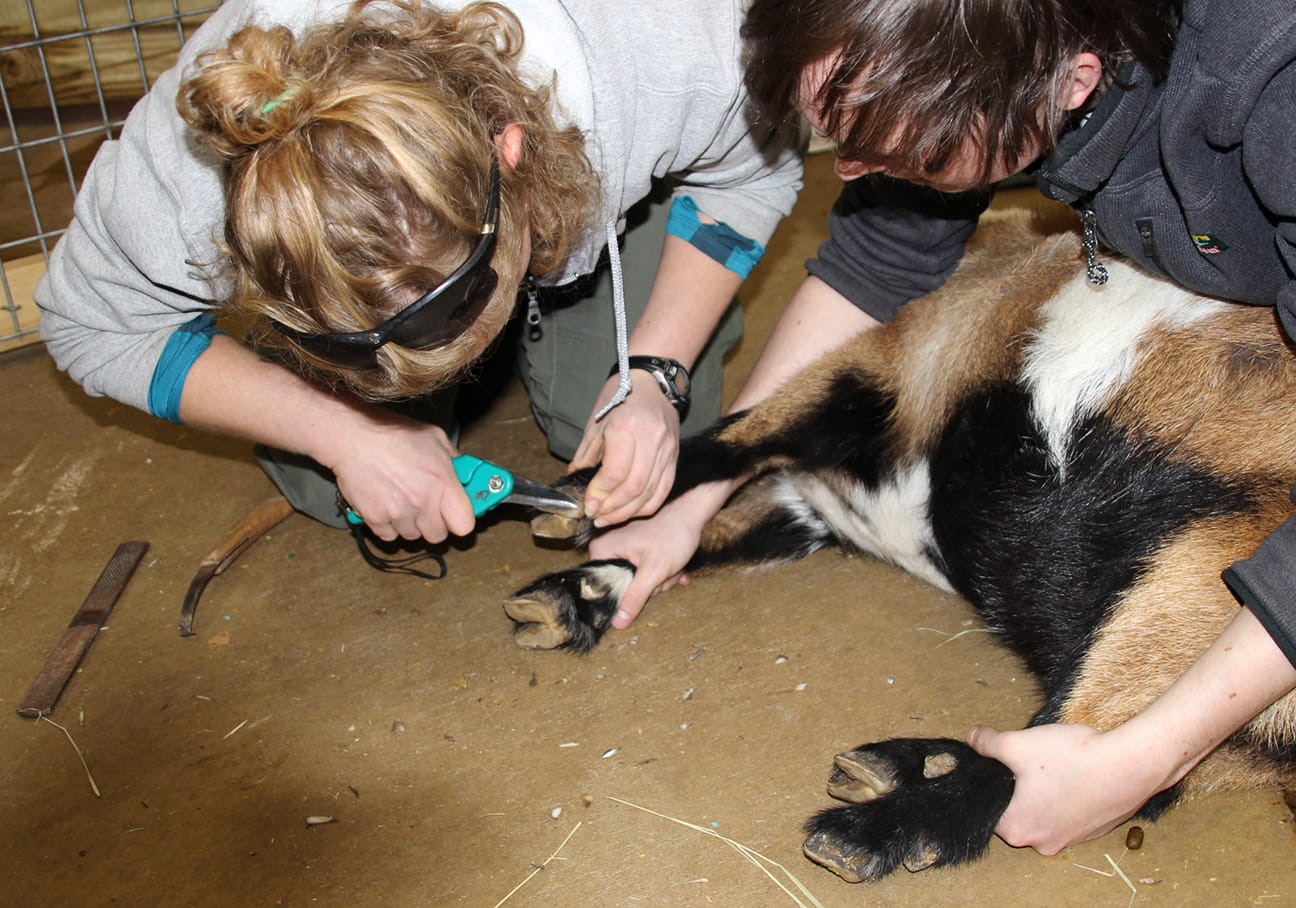
On what was a rainy day, had guests wandered upon the exams in the indoor area of the CAC, they would have been able to watch the entire process.
“Fortunately, the exams done this time could all be completed at the (CAC) and didn’t require a trip to the vet clinic,” Borgstrom said. “Some of the goats will need ultrasounds and radiographs this month, and they will need to go to the vet clinic for that. Having the indoor portion of the CAC was helpful for this, especially because it was raining.
“We didn’t happen to have any guests during the goat exams, but if people had come in, they would have been able to watch the exams. That would be a good teaching experience and we’d answer questions they might have.”
Borgstrom talked about the different types of goats at the CAC and mentioned some well-known goats of the recent past.
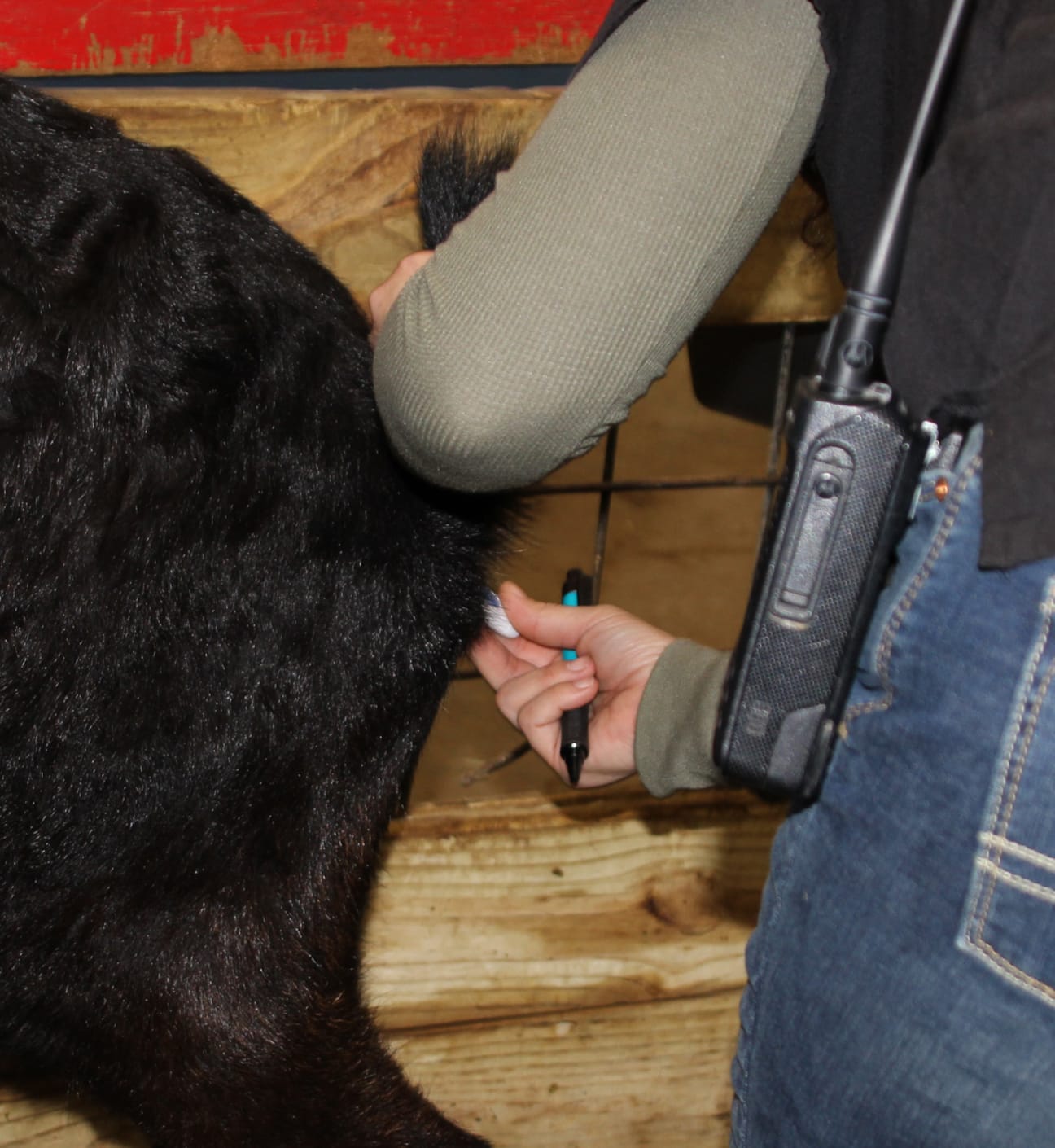
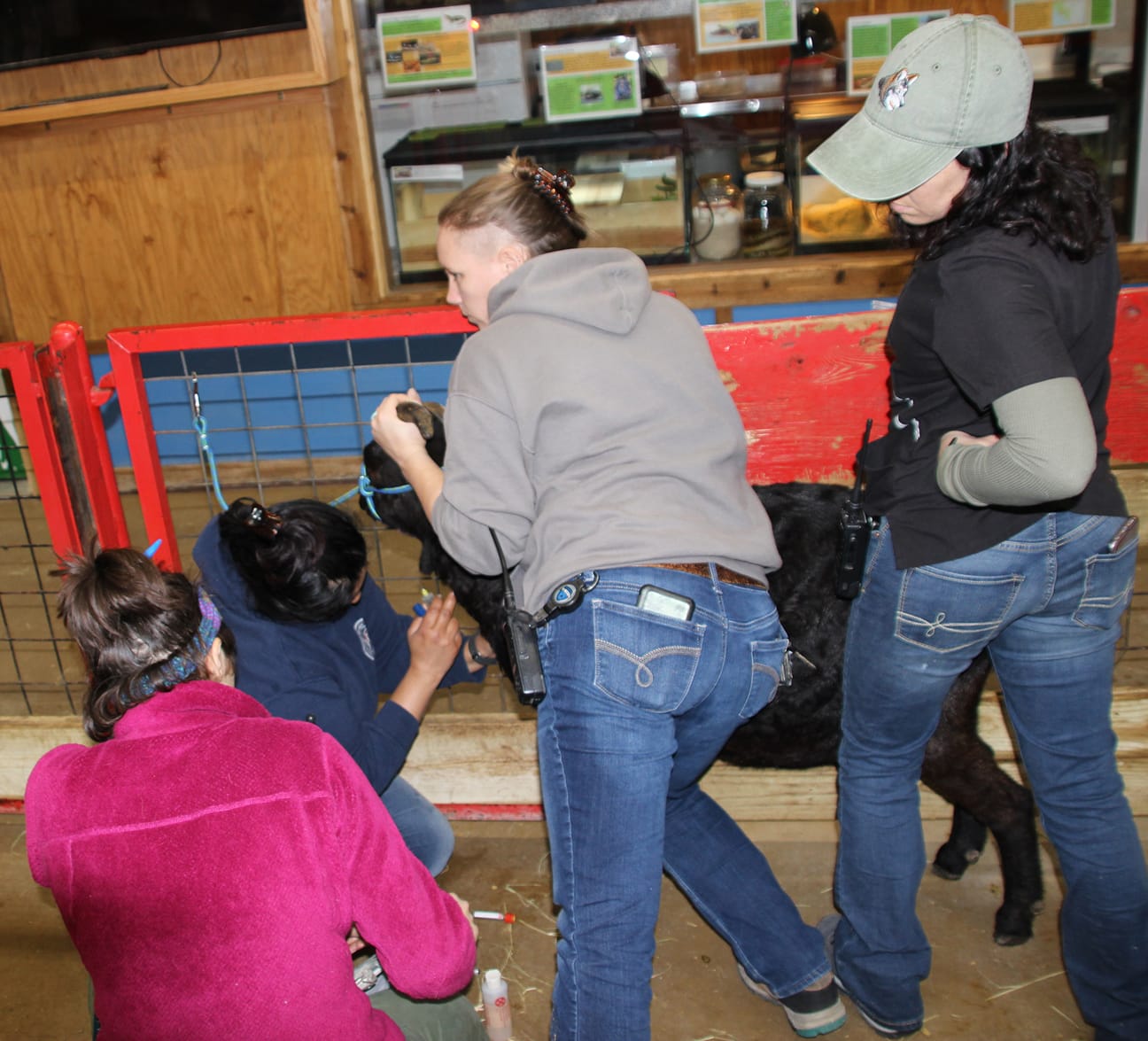
“We have three breeds of goats,” she said. “The Nigerian dwarf goats are the smallest, plus we have LaMancha/Nubian crosses and purebred Nubian goats. They range in age from 2-12 years, so everyone needs different medical care. We do body condition scoring, assessing muscle and fat in order to make needed dietary changes.
“Any animal at the CAC may one day be retired from that setting if we feel they have decreased mobility, need more attention, etc. We have a retirement barn near our administrative buildings.
“‘Spot’ and ‘Sweet Pea’ are a sibling Nigerian dwarf pair that we retired in October 2019. They are doing great, exercising more and putting on weight. Some of our staff will walk down there during lunch and give them some extra attention.”
Borgstrom values what the goats can provide to guests when it comes to the overall CAC experience.
“The goats are a fun part of our animal collection, especially because they are animals that visitors can be hands-on with for brushing and petting,” she said. “Because there is that physical interaction with guests, it’s especially important to keep the goats healthy and prevent any zoonotic disease from spreading. Our vet staff does an awesome job keeping them happy and healthy.”
While she will await the results of blood testing, Roberts was pleased with what she saw regarding the exam of the goats.
“All of our goats seem to be doing well,” she said. “We have several middle-aged goats and the Nubian goats are young. The Nubians had exams before their arrival a few months ago.
“It would be too early to give them vaccines again. Over time, we’ll adjust their schedule to where they are eventually examined at the same time as the other goats.”
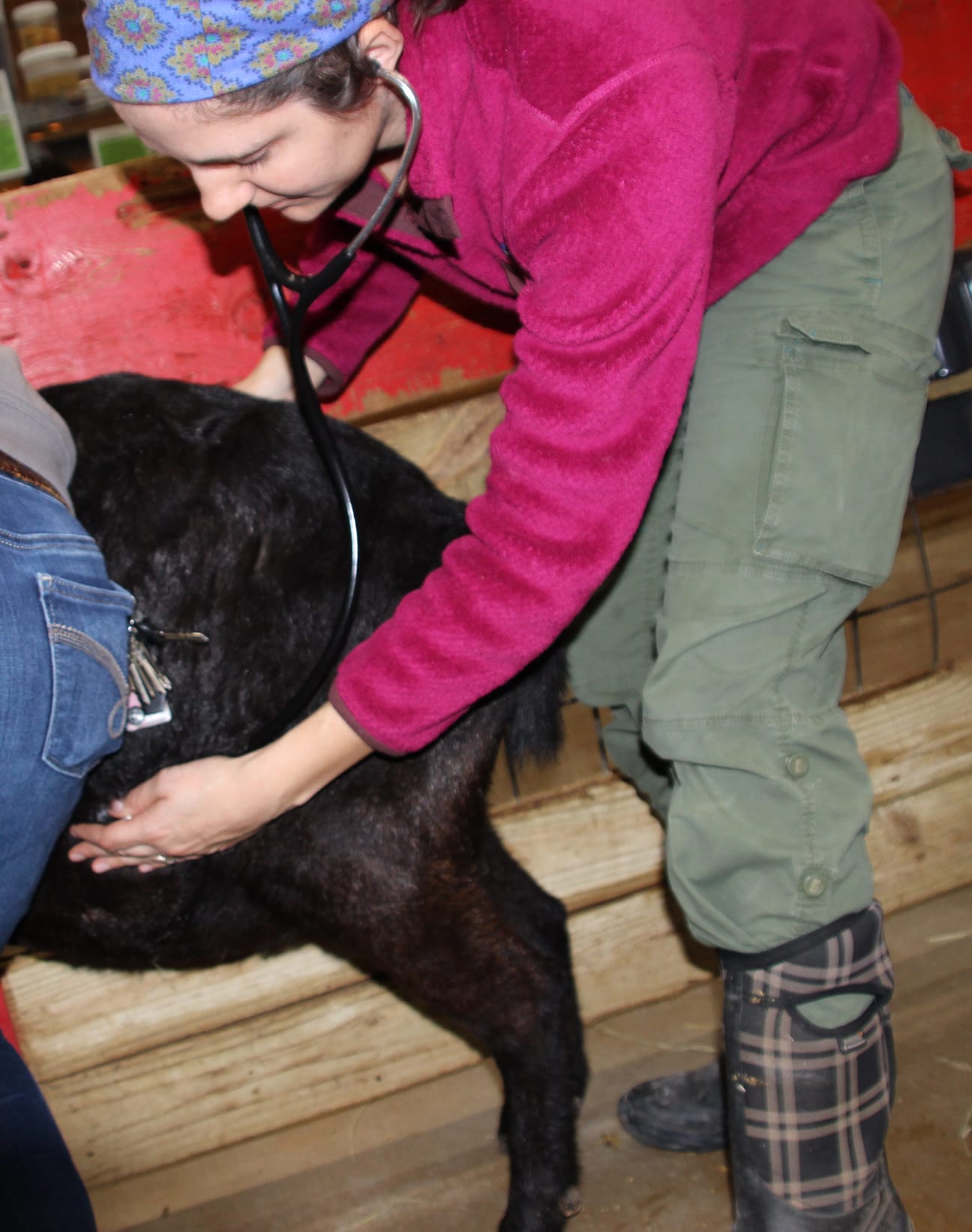
Borgstrom welcomes visitors to come see the goats and all the other CAC residents.
“When visiting the CAC, the weather can influence what you’ll see,” she said. “Sunny, warm days give you a better chance to see the birds and black-footed cats. Coming in the morning is the best time to interact with the goats, because they are eager for brushes and pets.”
In the months to come, learning opportunities at the CAC will continue to grow.
“This spring and summer, we are looking at having set program times on Saturdays and Sundays in the early morning, midmorning, and afternoon,” Borgstrom said. “Sometimes, that will mean taking our ambassador animals out, which involves reptiles, amphibians, and insects. Sometimes, it will mean drawing the mammals and birds closer to the fence and providing them enrichment.
“We will sometimes have biofacts like antlers and eggs that guests can touch. As we set dates on some of those things, we will make sure the public is aware of it.”
-Tye Chandler, Marketing Associate
